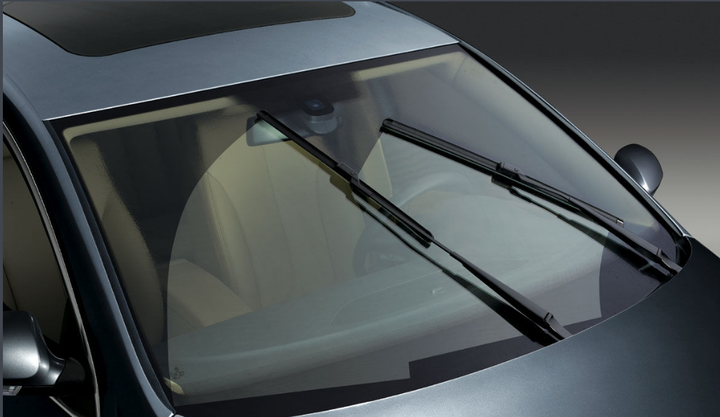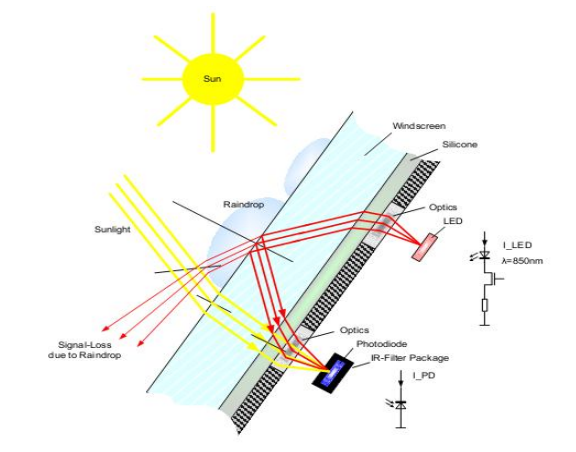When it comes to the use of artificial intelligence in cars, everyone's first reaction is autonomous driving, driverless. We always imagine that AI technology allows people to bring a wearable device and operate a car with a single thought. One day, without people taking over, and losing a destination, the car drove to itself. Of course, it would be better to be a time plane like A dream. Although it can't travel through time, it is great to realize the freedom of space.
However, in addition to autonomous driving, do you know which aspects of AI have been used in smart cars?
Give a small chestnut for your reference.
Wiper:
When it comes to wipers, everyone knows that this is a basic function that all cars have. Maybe everyone is wondering why mentioning such a high-tech as AI, but also the simple function of wipers?
Listen to me!
Traditional wiper:
On conventional cars, wipers are divided into high speed, low speed, intermittent gear, and off. Manually turn the wiper gear on the combination switch based on the driver ’s personal feelings of rainfall to ensure that the driver's vision is clear and driving safely.
Automatic wiper:
A more advanced conventional car has an automatic wiper function. It detects the rainfall through a rain sensor arranged on the windshield, and then drives the wiper movement.
Optical principle of automatic wiper function:
The infrared light emitting diode emits infrared rays through the optical element to form a parallel light beam with a certain incident angle. The infrared rays will cause total reflection on the inner surface of the windshield. The reflected infrared rays are focused on the infrared photodiode through the other end optical element.
The reflected light collected by the glass with or without rain is different.
When the glass surface is dry, the light emitted by the emission tube is incident on the windshield in parallel, and is reflected back to the maximum. After converging through the optical element, it is received by the photodiode.
When there are raindrops on the outer surface of the glass, the light incident on the windshield is partially scattered, and the light received by the photodiode becomes less after reflection. The greater the amount of rain, the less light is reflected back.
The amount of water on the windshield can be judged by different reflected light received, and then different rainfall patterns can be judged.
According to different rainfall patterns, wipers can be wiped at a certain speed within a certain rainfall interval after calibration.
Advantages and disadvantages of automatic wipers
advantage:
With optics, errors are less likely to occur.
Disadvantages:
- The rain sensor has a small contact area and can only perform if it falls into its reflection area. If the rainfall is sparse but the raindrops are heavy, it is likely to start slowly and affect the user's realization.
- Different users have different needs for different rainfall, and the calibration of the fixed value may not meet the needs of all users.
Smart wiper:
Of course, more advanced smart cars (hard and wide: G3 and P7) have been equipped with smart wipers, using AI vision algorithms to reduce costs and improve efficiency.
Intelligent wiper principle: AI vision
The intelligent wiper collects rainfall data on the front windshield through a forward-facing camera installed in the car. The algorithm divides the glass into different areas, and extracts features of rainfall from the pictures collected by the camera to determine whether there is rain in this area. Then, by calculating the probability of rain in each area, the amount of unified decision rainfall is determined. Finally, the speed and interval of the wiper are adjusted by the amount of rainfall.
Some people may ask, isn't smart wiper changing from sensor to camera? Is there anything special for users? Of course ~, the rainfall judgment realized by the AI algorithm can solve the problem of calibration fixedness.
When leaving the factory, the smart wiper has a default state. During use, users may dislike this state. For example, when the user thinks that the amount of rain is heavy, the intelligent wiper moves in intermittent gear. At this time, the user will manually adjust the low speed position on the combination switch, if the user stays in this position for a certain period of time. At this time, the algorithm will think that the user of this car likes faster speed in this rainfall situation, and the algorithm will learn the user's behavior, and adjust its own threshold value to speed up the next cycle or next power-on .
In short, smart wipers can be like Taobao shopping. You search for things you want to buy many times, and next time Taobao will push you similar items to meet your expectations and achieve thousands of faces.
Therefore, if you don't like the current smart wiper speed, you can adjust it manually. He will work hard to improve it to meet your expectations.
Of course, different smart cars have their own considerations. Some smart wipers only use visual algorithms to detect rainfall, and later use calibration to achieve unity. However, we believe that tailoring must be the future.
Advantages and disadvantages of AI wipers
advantage:
- The camera monitors a wide range and makes it easier to detect rainfall.
- The camera in the car can be used in many ways, so that it is not necessary to be equipped with a separate rain sensor, which can save costs.
Disadvantages:
- The algorithm relies on camera accuracy.
- Need a lot of data for algorithm training.
The above is just a simple chestnut to give everyone an intuitive feeling, and experience the difference between smart wipers and even smart cars and traditional cars.
In fact, AI has been applied to all aspects of smart cars, even including some traditional functions. We can expect that the development of AI in the future will promote the continuous development of automobiles.




0 Comments